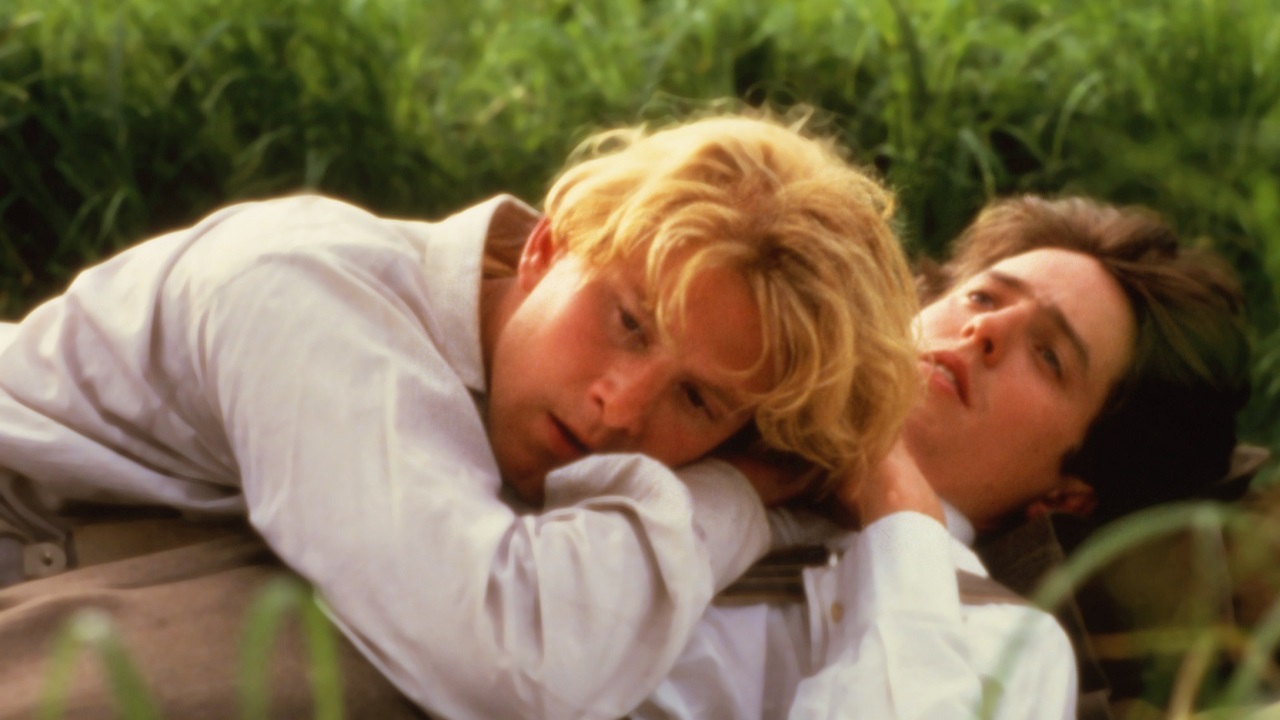Why E.M. Forster’s ‘Maurice’ remains one of the most important gay novels in history
Matt Cain looks back at the iconic gay novel, written in 1913–1914, published in 1971 and adapted for the big screen in 1987.
By Will Stroude

This article was first published in Attitude issue 258, June 2015.
E.M. Forster’s Maurice is a beautiful, heartbreaking and ultimately uplifting novel about gay love struggling to flourish during a time of stifling conformity and deep depression.
Set in Edwardian England, it follows the young Maurice Hall to Cambridge, where he falls in love with fellow student Clive Durham.
Both men have to overcome their disgust at their feelings but eventually give in and begin an intimate relationship, becoming so happy that Maurice entertains the dream that ‘Two men can defy the world’.
But after three years together Clive’s desire to ‘become normal’ finally overwhelms his love for Maurice and he ends the relationship. When he later marries a woman, a suicidal Maurice tries to cure his homosexuality with a course of hypnotherapy.
“I want to be like other men,” he tells the doctor, “not this outcast whom nobody wants.”

Perhaps inevitably, his desires re-surface and he’s soon enticed into a sexual relationship with bit-of-rough gamekeeper Alec Scudder. After much deliberation, Maurice decides that this time he won’t repress his true nature but will be true to himself and the two men give up everything to be together – to the outrage and disapproval of Clive.
In 1987 Maurice was made into a film by Merchant Ivory, starring James Wilby, Hugh Grant and Rupert Graves. But, however good this is, it can’t come close to matching the brilliance and bravery of E.M. Forster’s novel.
When I first read it, what struck me was how similar the protagonist’s emotional journey was to the one I went through during my youth and how remarkable it was that the author had written about this 100 years ago. Forster’s notes reveal that he deliberately set out to write a novel that would defend homosexuality – and one that he was determined would have a happy ending.

“I know nobody else who has done it,” he wrote, “though possibly the real right thing, shaming our clumsy efforts, lies buried in a hundred drawers.”
Although reading the book now you sometimes get the sense that Forster couldn’t quite shake off his shame about his own sexuality, his sense of injustice at the repression endured by gay men, forced to live under constant threat of blackmail and ruin, bursts out of every chapter.
The love that blossoms between gentleman Maurice and gamekeeper Scudder shows that same-sex love was considered so immoral it overrode all other social or class distinctions at the time. And references to ‘the unspeakable vice of the Greeks’ remind us that there was a time when this wasn’t the case and that the gay movement has its own rich cultural history.

Maurice was only published after E.M Forster’s death in 1971
Maurice is dedicated to ‘a happier year’, something that is usually read as a reference to the coming war. But I can’t help thinking it might also be a yearning for a time when homosexuality wouldn’t be considered evil. Although the novel was finished in 1914, because the author knew it would result in public outcry it wasn’t published until after his death in 1971.
In his obituary, The Times called Forster “one of the most esteemed English novelists of his time”. I think it’s doubtful that this would have been the case if Maurice had been published while he was still alive.
But in our own more enlightened time, we should celebrate the novel as one of Forster’s finest achievements – and one of the most important in the history of gay fiction.
Words: Matt Cain
